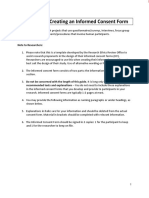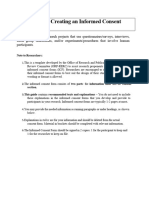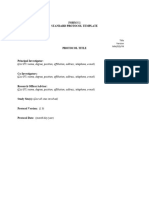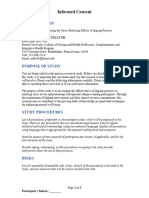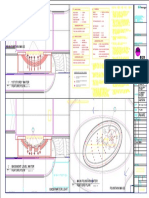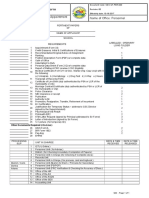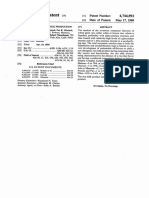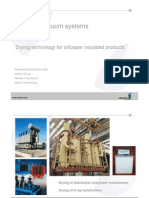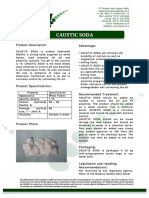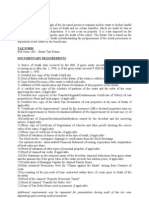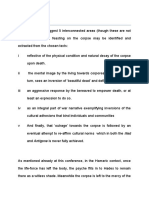TITLE (What, where, when……….
To assess ……………………………………………..
Student(s) Name: …………………………
A RESEARCH PROPOSAL PRESENTED IN PARTIAL FULFILMENT OF THE REQUIREMENTS FOR THE
AWARD OF ….................... 2021
1
� SUPERVISOR(S)………………..
DECLARATION BY AUTHOR
I hereby declare that this is my original work and has not been presented for academic
evaluation in any other College or University.
NAME: ………………………..
REGISTRATION NO: ……………………
SIGNATURE…………………..
DATE ………………..
DECLARATION BY SUPERVISORS
We confirm that the proposal is to be carried out by the candidate under our
supervision
………………………….. ……………
……………………………. Date………………..
2
�ABBREVIATIONS AND ACRONYMS.
3
�TABLE OF CONTENTS
1.0 CHAPTER ONE
1.1 INTRODUCTION
1.2Background
1.3 Statement of Problem
1.4 Objectives of the study
1.5 Main objective
1.6 Specific objectives
1.7 Justification
1.8 Hypothesis/research questions
1.9 ETHICAL ISSUES
2.0 CHAPTER TWO
LITERATURE REVIEW
3.0 CHAPTER THREE: METHODOLOGY
3.1 Research Design
3.2 Area of Study
3.3 Demographic profile
3.4 Target Population
3.5 Sampling Procedure
3.6 Sample Frame
3.7 Sample Size Determination
3.8 Eligibility: (criteria - inclusion criteria, exclusion criteria)
3.9 Data Collection Procedures
3.11 Variables
3.12 Statistical analysis
3.13 Describing of data
3.14 Risks and Assumption
3.15 Scope and Limitations of Study
3.16 Limitations of study
CHAPTER 4: APPENDIXES
4.1 CONSENT FORM
4.2 MAP OF AREA OF STUDY – MERU DISTRICT
4.3: QUESTIONNAIRE
4
�Chapter 1 : Introduction
Background Information
Statement of Problem
Rationale of Study
This study helps to assess the knowledge and attitudes of ……
disease………………………………
Find out the knowledge gaps among the people regarding the ………. and the misconceptions
and superstitious beliefs prevailing in the society about it………………….
Make available descriptive data which may be useful for the concerned authority
and planning institutions while preparing plans and programs to tackle the …………….……………..
Also, after this study people will be aware of the adopting healthy lifestyles and can manage
and prevent complications……………………………….
Objectives
General objective
To assess the knowledge and attitude on …… among ….. at MTRH
5
�Specific objective
1. To identify the socio-demographic data of the community people.
2. To assess the knowledge about …..
3. To assess the attitudes of ……….
Justification
Hypothesis/research questions
ETHICAL ISSUES
1. Confidentiality of patient information.
2. Voluntary participation/Subjects’ rights
3. Subject’s safety
4. Ethical approval
5. Informed Consent
6
�Chapter 2 Literature Review
1. Viral Etiology
2. Epidemiologic Characteristics
1. Mode of Transmission:
2. Incubation period:
3. Clinical manifestations
4. Initial presentation:
3. Management:
Site of care
1. Home care:
2. Hospital care:
7
�Chapter 3:Research Methodology
1. Study Method and Design
2. Study Area
3. Study Population
4. Sampling Technique
5. Target Population
6. Eligibility: (criteria - inclusion criteria, exclusion criteria)
7. Data Collection Method
8. Variables
Data Analysis
The data analysis will be planned as following:
1. Descriptive analysis will be done in form of frequency, percentage and mean.
2. Data will be presented in different frequency table, cross tabulation, chart.
3. Analysis will be done using SPSS
8
�Chapter 4
Questionnaire e.g.
Part: I Background information (please tick appropriately)
1. Gender:
Male
Female
2. Residency:
Urban
Rural
3. Age Group: Which of the following age groups do you belong to?
18 – 24
25 – 29
30 – 34
35 – 39
40 - 45
4. Year of study :
One
Two
Three
Others
5. Marital Status:
Married
Single
Divorced
9
�6. Faculty of study :
Theology
Health sciences
Education
CIS
Others
7. Religion:
Christian
Muslim
Others
10
�4.4 TIME SCHEDULE e.g.
S/n Activities March
2023
1 Site Selection
2 Literature Review
3 Questionnaire Preparation
4 Proposal Preparation
5 Proposal submission
6 Data Collection
7 Data analysis
8 Report writing
9 publication
11
�4.5 RESEARCH BUDGET e.g.
S/n Activities Quantity Unit rate Total
(Ksh) amount(ksh)
1 Site Selection/ transport 1 3,000 3,000
2 Literature Review/internet 1 2,500 2,500
bundles
3 Questionnaire 1 1,200 1,200
Preparation/typing
4 Proposal printing 1 1,500 1,500
5 Proposal submission 1 500 500
6 Data Collection 1 10,000 10,000
7 Data analysis 1 8,000 8,000
8 Report writing 1 2,000 2,000
9 publication 1 9,500 9,500
10 Sub-total 38,200
11 Contingency 5% 1,910
13 Total 40,110
12
�4.6 Consent form e.g. Use the WHO template
Informed consent form (WHO template)
Note to Investigators:
When creating informed consent letters, investigators are encouraged to keep language and
vocabulary as basic and straightforward as possible. Investigators are also encouraged to use
this template when creating informed consent letters. Use of alternative wording or format is
permitted, but doing so may slow down the review process. All sections of the consent form,
except the "Consent" section, should be written in second person ("You are invited...").
Headers should include “Informed Consent” followed by the title of the study (e.g., the header
in this document). Footers should include page numbers. If your consent letter is more than one
page, the footer should also include a space for the participant’s initials (e.g., the footer in this
document).
Be sure to include any basic components of informed consent that are appropriate to your
study. If components apply to your study, they must be included. Please refer to the document
entitled “components of informed consent” for more information. If you have any further
questions, contact the Director of Institutional Research at (865) 354-3000, ext. 4822.
**Information in italics is for your information and should be deleted from the actual consent
form. Material in brackets should be completed with relevant information.**
TITLE OF STUDY
[Insert title]
PRINCIPAL INVESTIGATOR
[Name]
[Department]
[Address]
[Phone]
[Email]
PURPOSE OF STUDY
You are being asked to take part in a research study. Before you decide to participate in this
study, it is important that you understand why the research is being done and what it will
13
�involve. Please read the following information carefully. Please ask the researcher if there is
anything that is not clear or if you need more information.
The purpose of this study is to [Briefly describe purpose of study.]
STUDY PROCEDURES
List all procedures, preferably in chronological order, which will be employed in the study. Point
out any procedures that are considered experimental. Clearly explain technical and medical
terminology using non-technical language. Explain all procedures using language that is
appropriate for the expected reading level of participants.
State the amount of time required of participants per session, if applicable, and for the total
duration of the study.
If audio taping, videotaping, or film procedures are going to be used, provide information about
the use of these products.
RISKS
List all reasonably foreseeable risks, if any, of each of the procedures to be used in the study,
and any measures that will be used to minimize the risks.
You may decline to answer any or all questions and you may terminate your involvement at any
time if you choose.
BENEFITS
List the benefits you anticipate will be achieved from this research. Include benefits to
participants, others, or the body of knowledge. If there is no direct benefit to the participant,
state so. For example, “There will be no direct benefit to you for your participation in this study.
However, we hope that the information obtained from this study may….”
When applicable, disclose alternative procedures or courses of treatment, if any, which might
be advantageous to participants.
CONFIDENTIALITY
Your responses to this [survey] will be anonymous. Please do not write any identifying
information on your [survey]. OR For the purposes of this research study, your comments will
not be anonymous. Every effort will be made by the researcher to preserve your confidentiality
including the following:
[State measures taken to ensure confidentiality, such as those listed below:
1. Assigning code names/numbers for participants that will be used on all research notes
and documents
14
� 2. Keeping notes, interview transcriptions, and any other identifying participant
information in a locked file cabinet in the personal possession of the researcher.]
3. Participant data will be kept confidential except in cases where the researcher is legally
obligated to report specific incidents. These incidents include, but may not be limited to,
incidents of abuse and suicide risk.
COMPENSATION
If there is no compensation, delete this section.
Indicate what participants will receive for their participation in this study. Indicate other ways
participants can earn the same amount of credit or compensation. State whether participants
will be eligible for compensation if they withdraw from the study prior to its completion. If
compensation is pro-rated over the period of the participant's involvement, indicate the
points/stages at which compensation changes during the study.
CONTACT INFORMATION
If you have questions at any time about this study, or you experience adverse effects as the
result of participating in this study, you may contact the researcher whose contact information
is provided on the first page. If you have questions regarding your rights as a research
participant, or if problems arise which you do not feel you can discuss with the Primary
Investigator, please contact the Institutional Review Board at (865) 354-3000, ext. 4822.
VOLUNTARY PARTICIPATION
Your participation in this study is voluntary. It is up to you to decide whether or not to take part
in this study. If you decide to take part in this study, you will be asked to sign a consent form.
After you sign the consent form, you are still free to withdraw at any time and without giving a
reason. Withdrawing from this study will not affect the relationship you have, if any, with the
researcher. If you withdraw from the study before data collection is completed, your data will
be returned to you or destroyed.
Note: Please delineate the "Consent" section of the Informed Consent Form by drawing a line
across the page (like the one above this paragraph). This delineation is important because the
consent form grammar shifts from second person to first person, as shown in this example.
CONSENT
I have read and I understand the provided information and have had the opportunity to ask
questions. I understand that my participation is voluntary and that I am free to withdraw at any
time, without giving a reason and without cost. I understand that I will be given a copy of this
consent form. I voluntarily agree to take part in this study.
15
�Participant's signature ______________________________ Date __________
Investigator's signature _____________________________ Date __________
4.7 REFERENCES e.g.
1. Guan WJ, Ni ZY, Hu Y, et al. (2020). Clinical Characteristics of Coronavirus
Disease 2019 in China. N Engl J Med 2020.
2. National Institutes of Health, 2020. New coronavirus stable for hours on
surfaces, 17 March 2020. Retrieved 25 March 2020.
16


